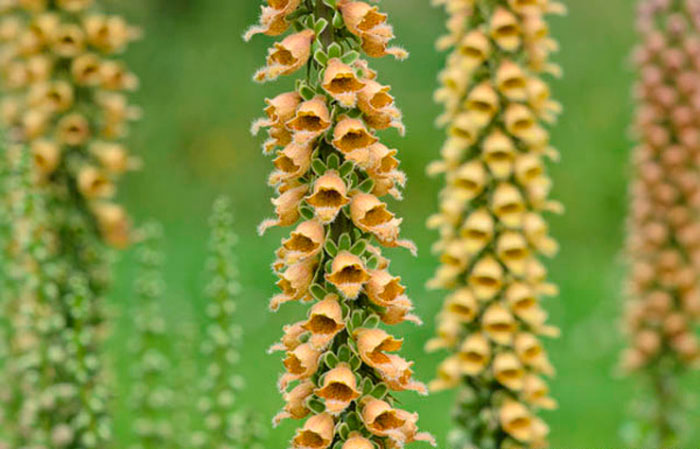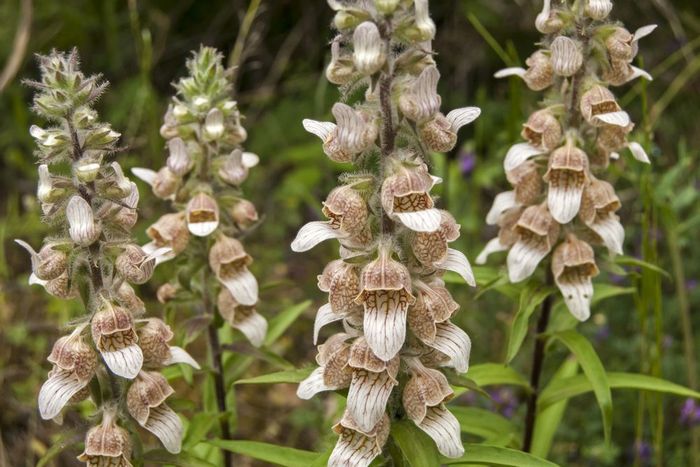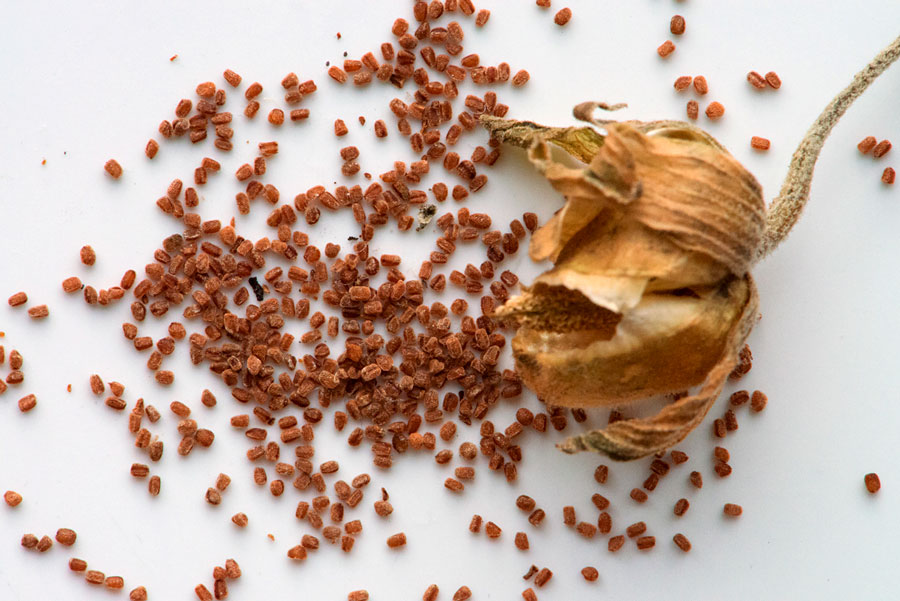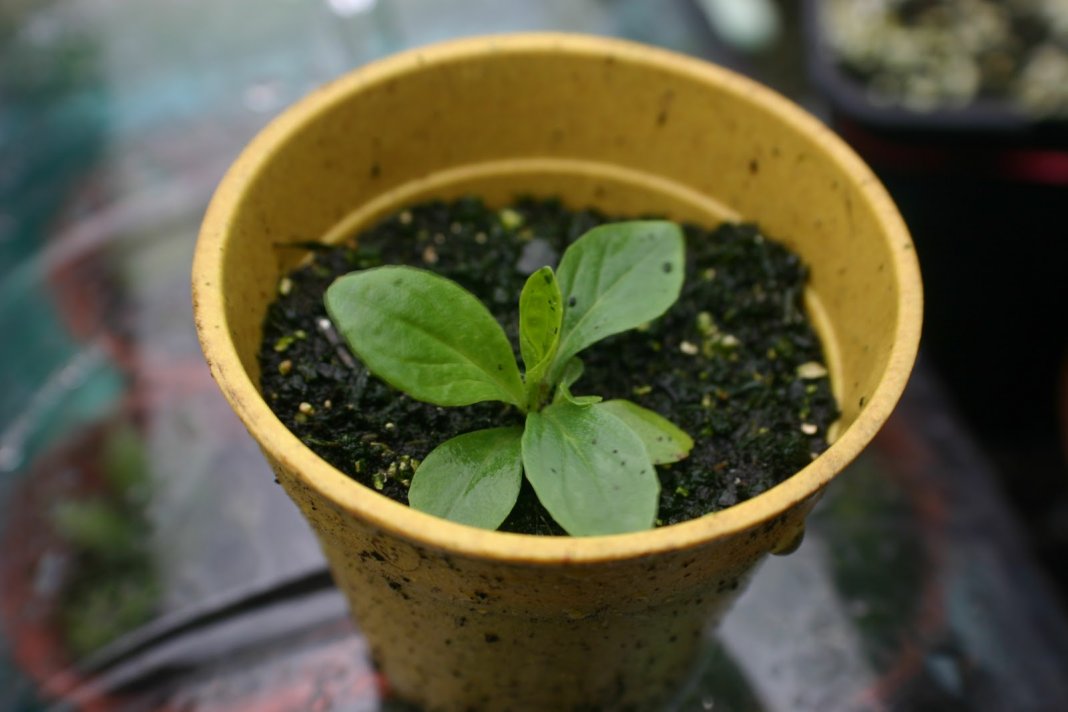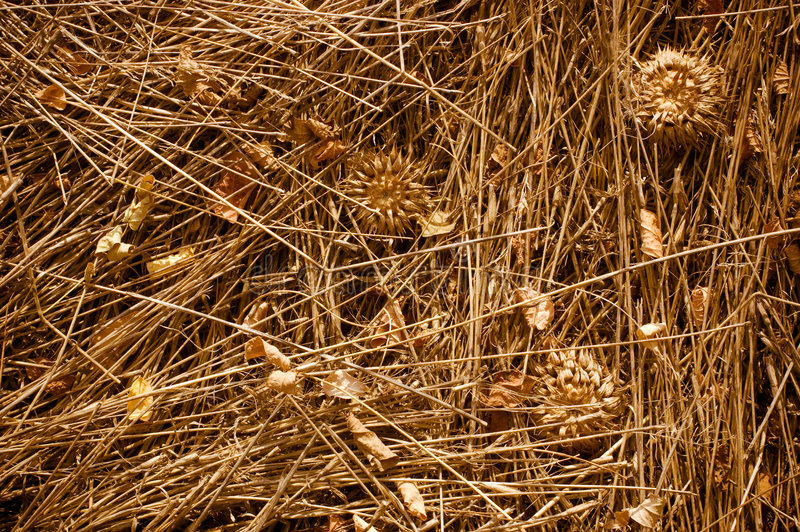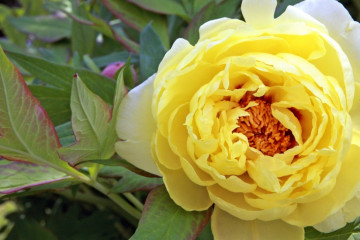Perennial digitalis - the best types and varieties for giving
Content:
Perennial foxglove is a fairly tall and spectacular-looking plant that is often grown in the garden. The flower is unpretentious to care for and grows well both in shaded areas and under bright sunlight. Growing this plant yourself is quite simple. However, despite this, the cultivation process has a number of features that you need to familiarize yourself with in advance.
A brief description of foxglove
Foxglove is a herb that belongs to the plantain family. This botanical species was first described in the second half of the sixteenth century by the famous botanist Fuchs. It was after this that the flower began to gain popularity and many growers in Europe began to grow it.
The main distinguishing characteristics of the foxglove are decorative and unpretentious cultivation. Under natural conditions, it can grow in almost any soil and even in rocky areas. The plant is not afraid of droughts and light frosts. The average height of the foxglove is 60-70 cm. However, under optimal conditions, the plant becomes a real giant and grows up to one and a half meters.
The stem of the flower is powerful and thick. The inflorescences are also quite tall, covered with bell-shaped flowers. The color of the petals depends on the variety of foxglove. Most often they are painted in the following colors:
- white;
- yellow;
- pink;
- purple;
- purple;
- Orange.
Foxglove has very useful leaves. They contain many vitamins and mineral components. From young foliage, you can prepare medicinal decoctions that will help strengthen blood vessels, improve blood circulation and normalize blood pressure.
Types and varieties of foxgloves
There are five varieties of foxgloves, each of which has certain characteristics.
Purple
Purple foxglove is a perennial (or biennial) flower that grows up to one and a half meters in height. This biennial has erect stems with small basal leaves. According to the GF, the purple foxglove has ovoid leaves about ten centimeters long. The petals are white, with a slight pinkish and purple tinge.
Common varieties of this species include:
- Alba. A plant with bright white flowers.
- Red dwarf. Variety with deep red petals.
- Mirabella. Purple foxglove, the petals of which are painted pink with a cream shade.
Large-flowered
Large-flowered foxglove is a tall flower with stems reaching 120 cm in height. Flowering begins in the first half of summer and lasts 2-3 months. The flowers are yellowish.
Among the varieties of this large-flowered perennial are:
- Camelot Rose.Hybrid variety that grows up to 150 cm in height. It blooms for two seasons.
- Sugar Plume. Tall flower, ideal for growing in a flower bed. Blooms from early June to late August.
- Carillon. Large-flowered variety with yellow petals. Its flowering begins in early summer and lasts until early September.
Rusty
A medium-sized species, the height of which rarely exceeds 60-70 cm. The rusty foxglove has dense wavy inflorescences, consisting of small bells. The petals are yellowish. Some of them have pinkish designs.
The varieties of this type include:
- Giant. Frost tolerant plant ideal for outdoor cultivation. The Giant's petals are yellow with a barely noticeable orange tint.
- Gelber Herold. Medium-sized variety with oblong and pubescent leaves. Blooms from late June to early September.
- Carousel. A flower with yellowish petals covered with red spots.
Woolly
Woolly digitalis is a medium-sized perennial that does not grow taller than eighty centimeters. This species differs from other varieties in its late flowering.
Among the main varieties of woolly varieties, the following are distinguished:
- Dalmatian Purple. Tall flower that grows up to 115 cm in height. The leaves of the variety are oblong, colored green. Blooms in early July with purple flowers.
- Pink champagne. A plant with multi-colored flowers. Ideal for planting in shaded areas.
Yellow
This perennial flower is similar to the rusty foxglove species. Its petals are also most often colored yellow. The plant grows up to one and a half centimeters in height. It is necessary to grow this type of culture on fertile soils, which contain many nutrient components.
Digitalis: planting and care
Before you start growing a plant, you need to understand the peculiarities of planting and growing it.
Reproduction
There are three main ways that digitalis can be propagated.
Seeds
Many growers are engaged in the cultivation of perennial foxglove from seeds. Before planting seeds, you need to prepare for planting. During preparation, you should:
- Choose a suitable time for planting. You need to do this in early March.
- Pick up containers. It is necessary to plant the foxglove in large pots with high-quality drainage.
- Carry out soil preparation. You can plant digitalis in any soil. However, in order for it to bloom in time, it is better to plant it in fertile soil. Therefore, the soil must be fertilized in advance with mineral and organic fertilizing.
- Prepare seed material. All seeds that will be planted in the ground must be germinated in advance. To do this, cover them with a damp cloth for 2-3 days or soak them in a growth stimulator.
After preparation, you can start planting seeds. To do this, pour the fertilized soil into pots and make holes in it with a depth of 2-3 cm. The planted seeds should be watered with warm water and sprinkled with earth. The pot with the planted flowers must be transferred to a sunny windowsill.
Taking care of the planted flowers is quite simple. It is enough to water the seedlings daily with warm water and then loosen the soil. It is not necessary to add additional fertilizing. They are used only after transplanting seedlings.
When the first true leaves appear on the seedlings, it can be transplanted to a new place. To do this, the plant must be carefully removed from the pot and planted in a previously prepared hole.Moreover, its depth should be at least 5 cm so that the root system can fully fit there.
Root shoots
Foxglove can multiply by root shoots. To do this, in early spring, it must be carefully cut and germinated in water. When the sprouted offspring take root, they can be transplanted to a permanent place. It is best to do this in mid-April, when the air temperature will not drop below 10 ° C heat.
Dividing the bush
Dividing the bushes of digitalis flowers should be done after flowering. To divide the bushes, they must first be carefully dug out of the ground and divided into parts. Then the separated shoots are planted in new places.
Care
Foxglove flowers must be properly cared for so that they grow well and do not dry out. Optimal conditions for her: moderate watering, shallow loosening.
Watering
Flowers planted in the garden should be watered 2-3 times a week, as without watering they will quickly dry out. To moisten the soil, you need to use heated water.
Mulching
You may need to use mulch to keep moisture in the soil for longer. The planted flowers can be mulched with sawdust or dried grass. This should be done annually at the end of spring.
Loosening
After moistening the soil, a dense crust remains on its surface. To get rid of it, you need to loosen the soil once a week. To do this, you need to loosen the ground with a hoe near the planted flower. If there is no hoe, then a rake can be used instead.
Top dressing
Fertilization begins in mid-spring. During this period, a fertilizing mixture of ammonium nitrate is introduced into the soil. To prepare it, you need to add 15 g of the substance to 10 liters of water. Next time you need to feed the flowers in the summer. Chemical and mineral fertilizers are added to the soil to stimulate flowering.
Transfer
When the plant grows too large, it needs to be replanted to a new location. It is necessary to do a transplant at the beginning of summer. To do this, you need to carefully dig in a bush and remove it along with an earthen lump. The new place where the foxglove will land must be prepared in advance. For this, the soil is moistened and fed.
Signs of improper care
It is possible to understand that foxglove is not properly looked after by several signs. Among them are:
- falling of petals;
- yellowing of foliage;
- lack of flowering;
- wilting of the stems;
- stopping growth.
The appearance of at least one of the above signs suggests that it is necessary to change the care of digitalis.
Flowering features
The digitalis bloom has a number of features. Many are interested in when the foxglove blooms. Most often, flowering begins in summer and ends in August or September. The flowers of the plant have an irregular shape. They come in different types, but the most common flowers are white, pink, yellow and purple.
After the appearance of flowers, the foxglove must be carefully looked after. She needs increased watering and mineral fertilizers.
Diseases and pests
Picture 8 Aphids are the most dangerous pest for foxglove
The most common problems that a person can face while growing digitalis are pests and diseases. Among the most dangerous diseases for flowers, the following are distinguished:
- powdery mildew;
- gray rot;
- rust dropsy.
Foxglove is a poisonous plant and therefore rarely attacked by insects. However, sometimes the flower suffers from an invasion of nematodes and aphids.
Application in landscape design
Digitalis is often used to decorate gardens and home gardens.It goes well with tall trees and lush shrubs. You can also plant it on the lawn, near ponds or reservoirs. Many people use it in landscape design because of the long flowering, thanks to which you can decorate any area for the whole summer.
Foxglove is a unique and beautiful plant with an unusual name. Growing such a flower is quite simple, but before that you need to familiarize yourself with the main features of planting and caring for digitalis in the open field.


